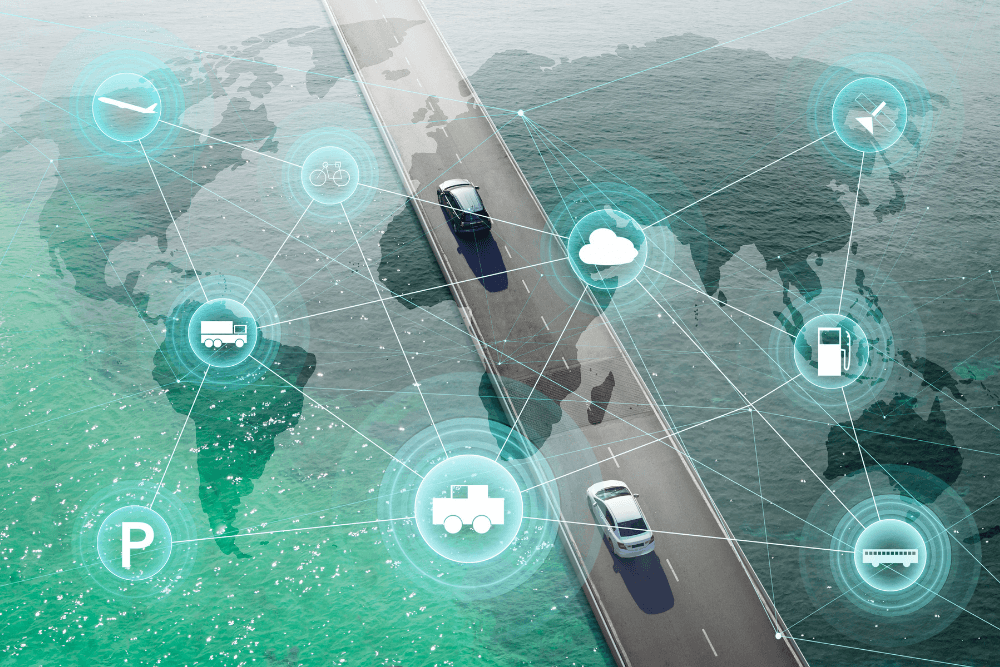Depending on where you live, an electric vehicle passing you on the street may either be an unusual view or something so common that you no longer pay attention to it. Although EVs still tend to arouse some controversy, the mass adoption and general uptake can be widely observed. Recent sales figures firmly back up the thesis about the future of transportation being green.
EV sales figures
Despite the global economic downfall brought about by the challenges of 2020, the electric automotive market stayed unbothered and, what’s more, grew even stronger. EV global market share increased from 2,5 % in 2019 to 4,2 % in 2020.
Given the difficult circumstances, this is a giant leap forward and a very bright ray of hope for the future. While nearly 14% fewer light combustion engine vehicles were sold, the electric automotive market itself noted a ground-breaking 43% increase.
For the first time in years, Europe has also superseded China in sales figures and with nearly 1,4 million BEVs and PHEVs registered (137 % more than a year prior), the Old Continent secured the position of a major player in the eMobility world.
This can be mirrored in recent big cheese brands’ actions. Kicked off by Ford Motor Company and their ambitious plan to go fully electric in Europe by 2030, with Jaguar Land Rover and Volvo Group joining the pioneering venture, and recent FedEx following in their footsteps and announcing a mandate to reduce the carbon footprint to zero by 2040, the future of transportation seems greener than ever.
A shining beacon of hope can also be observed in forecasts, as most of them anticipate continuing falls in battery prices. According to BloombergNEF’s data, battery cost noted an unprecedented decrease of 89% and is projected to go even lower. This is likely to bring the EV’s prices to a level comparable with the prices of gasoline vehicles and put a stop to controversies surrounding the costs of electric cars.
All these factors leave no doubt that mass adoption of electric vehicles is on the verge of reaching a tipping point. In fact, in some countries, the barrier has already been broken.
Top EV Selling Countries in Europe in 2020
According to data from industry trackers, the top 5 EV-selling countries in 2020 in Europe were:
- Norway
- Iceland
- Sweden
- Netherlands
- Finland
Having the primacy of the rest of Europe, the above countries all noted plug-in electric vehicles share in sales above 18%. Leading the way, Norway marked a whopping 74.8% in EV sales, leaving the rest behind. Although Germany has not made it to the Big5, it’s worth mentioning that in terms of EVs on the roads, it’s the second biggest market after China, with 1 out of 8 global plugin sales taking place.
However, even if all those figures look extremely promising, we must remember that high-volume sales in the aforementioned countries are heavily incentivized by various governmental policies and facilitations. Many of which cannot be easily transferred to other states.
Why is e-mobility so popular in those countries?
The impressive figures and advanced, ever-increasing development surely leaves lots of questions. What powered the enlarged demand for EVs? Why do some countries keep falling behind with mass adoption? Why are there so many differences in sales rates in various parts of the world? What can be done to even out the numbers of electric vehicles on the world’s roads?
This is where things get complicated. Success of eMobility in scandinavian countries, particularly in Norway, is strictly dependent on far-going governmental actions and various policies. Norway started implementing them back in the 1990s, and they have evolved ever since. Amongst the most significant facilitations, there are:
- No purchase/import taxes
- Exemption from 25% VAT on purchase
- No annual road tax
- Parking fee for EVs was introduced locally, with an upper limit of a maximum of 50% of the full price
- Access to bus lanes
- Exemption from 25% VAT on leasing
Although these all look like pretty straightforward and easy-to-implement policies, things get a bit more complex. It has to be mentioned that Norway’s vehicle import duties and car registration taxes tend to be very high (one of the most expensive in Europe), and waiving them specifically for EVs makes them very attractive for potential buyers.
Another notice-worthy factor is that Norway’s median household income (after tax) is around $54000, which is twice as high as the European average. This leaves Norwegians with a lot more consumption’s possibilities.
Similar policies are implemented in other top selling countries, which clearly explains as to why some tend to sell so many EVs. In Iceland, there are also incentives offered to charge point operators, who are well supported in terms of developing the charging infrastructure. In Stockholm, Sweden, owners of electric cars, who subscribe to a parking space, are offered with free charging. Swedish facilitations are also projected to get only more advanced, as the government has set the goal of becoming carbon-neutral by 2045. The Netherlands offer a subsidy of $4000 for first EV buyers.
Another game-changing aspect is undoubtedly the infrastructure. It’s one of the cases where demand can be created via market design. In 2019, 26% of European charging stations were located in the Netherlands.
Access to a well-structured, effective charging network is more important than any financially oriented incentive. This certainly applies to both accessibility and the number of charging stations available.
Part of the major success behind infrastructure in top selling countries is that they all have normalized the distribution of charging points in the big cities (that is: dedicated for charging spots on parking lots or buildings’ infrastructure inclusive of charging stations i.e. the possibility of charging a car while being at work, as well as facilities for people who live in blocks of flats) as well as stations in less densely-inhabited areas allowing for a longer car rides across the country. Such solutions, apart from making it easy for EV owners to maintain their vehicles, play a huge role in getting other people familiar with the concept of e-mobility.
Well-developed infrastructure also drives the growth of open standards. ElaadNL and Nederland Kennisplatform Laadinfrastrutuur (NKL) are two major platforms for public charge infrastructure in the Netherlands, which help significantly in the seamless maintenance of an EV.
All these factors are heavily dependent on the financial state of the country, its development goals, and the infrastructure advancements, and cannot be easily transferred across the globe. Technological solutions, education, environment awareness, and the average household income play a huge role in the shaping of eMobility popularity. This, however, does not change the fact that there is hope for everyone.
E-mobility lessons to learn from top selling countries
It goes without saying that certain practices cannot be widely copied everywhere. However, there is a number of actions that can be slowly but surely taken in order to drive the uptake of electric vehicles in many cities. It all starts with some solid steps taken by authorities. Undoubtedly, some incentives need to be presented to get more and more people to shift from their combustion-engine vehicles to electric ones.
It all starts with some solid steps taken by authorities. Undoubtedly, some incentives need to be presented to get more and more people to shift from their combustion-engine vehicles to electric ones. Kicking it off with investing in electric public transport may come in handy here. Large amounts of funds are spent on mass transit yearly, allocating this money into emobility solutions may be a first firm step towards an electric future. Such actions would also reinforce major ameliorations on charging networks and infrastructure. Namely, an increased amount of electric vehicles (here: public transport ones, i.e., buses) would result in a higher demand for charging stations.
This, in turn, would not only improve the infrastructure but also would allow local mobility-handling companies to spread their wings and possibly search for and find more and more innovative solutions. Surely, this would also contribute to the growth of locally-based open platforms, enabling more people seamless use of the charging infrastructure.
It would also be recommended that actions undertaken go beyond local authorities, all the way to national governments. As much as mirroring Norway’s policies might be impossible in most of the other countries, some practices, especially in terms of parking discounts or some tax reductions, should be implemented. This also applies to paying more attention to the proper education in terms of sustainability and an eco-friendly approach. Youngsters should be taught on the importance of environmentally-oriented options as this may heavily influence their future choices.
Although the transition to all-electric cars will certainly take some time, with a solid focus in mind and some work, the future of transportation may turn green sooner than it was initially expected.

